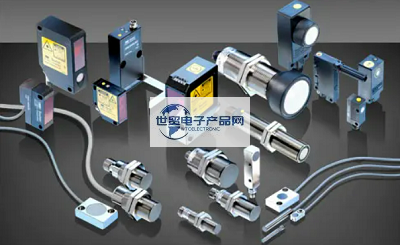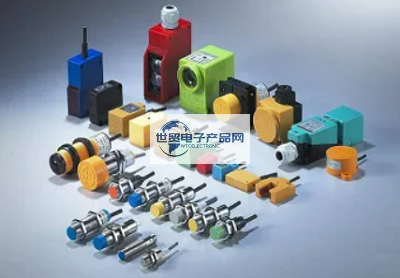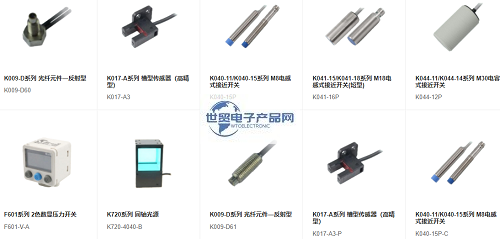Categorization:Product Information
I. What is a sensor?
"An equipment or device that senses a specified measurement and converts it into a usable signal according to a certain law, usually consisting of a sensor and a conversion element". A sensor is a detection device that senses the measured information, converts the sensed information into electrical signals or other required forms of information output according to certain rules, and meets the requirements of information transmission, processing, storage, display, recording, control, etc. It is the main link to realize automatic detection and automatic control.

2. Classification of sensors Currently, there are three commonly used classifications of sensors. 1. According to the physical quantity classification of sensors, it can be divided into sensors such as displacement, force, speed, temperature, flow, and gas composition. 2. According to the working principle of sensors, they can be divided into resistance, capacitance, inductance, voltage, Hall, photoelectric, grating, thermocouple and other sensors. 3. According to the classification of the nature of the sensor output signal, the output can be divided into switch-type sensors with switching values ("1" and) 0) or "on" and "off"). The output is an analog sensor; A digital type sensor that outputs pulses or codes. Regarding the classification of sensors 1. Classification according to the measured physical quantity. For example, force, pressure, displacement, temperature, angle sensors, etc. 2. According to the working principle of sensors, such as strain gauge sensors, piezoelectric sensors, piezoresistive sensors, inductive sensors, capacitive sensors, photoelectric sensors, etc. 3. Divided according to the method of sensor energy conversion:) 1) Energy conversion type) Piezoelectric type, thermocouple, photoelectric sensor, etc. ) 2) Energy control) Such as resistive, inductive, Hall sensors, thermistors, photoresistors, humidity resistors, etc. 4. According to the working mechanism of the sensor, it is divided into:) 1) Structural type) such as inductive and capacitive sensors, etc. ) 2) Physical property types) Piezoelectric, photoelectric, various semiconductor sensors, etc. 5. Divided according to the sensor output signal format: (1) Analog) The sensor output is analog voltage. ) 2) Digital) The sensor output is a digital quantity and is, for example, an encoder sensor. 3. Static characteristics of the sensor The static characteristics of the sensor refer to the relationship between the output and input of the sensor for the static input signal. At this time, since the input amount and the output amount are independent of time, these relationships, that is, the static characteristics of the sensor, can be described by an algebraic equation that does not include a time variable, or a characteristic curve in which the input amount is the horizontal axis and the output amount corresponding thereto is the vertical axis. The main parameters characterizing the static characteristics of the sensor are linearity, sensitivity, resolution, hysteresis and so on.

4. Dynamic characteristics of the sensor Dynamic characteristics refer to the characteristics of the output of the sensor when the input changes. In practice, the dynamic characteristics of sensors are often expressed by the response to specific standard input signals. This is because the response of the sensor to the standard input signal is easily obtained experimentally, and there is a certain relationship between the response to the standard input signal and the response to an arbitrary input signal, and thus it is known that the former can be estimated to the latter. Because the most commonly used standard input signals are step signal and sinusoidal signal, the dynamic characteristics of the sensor are also represented by step response and frequency response. V. Linearity of the Sensor Typically, the actual static characteristic output of the sensor is a curve rather than a straight line. In practical work, in order to make the instrument have a uniform scale reading, the fitting straight line often approximates the actual characteristic curve and linearity (nonlinear error), which is a performance index of approximation. There are several ways to choose to fit a straight line. When the theoretical straight line connecting the zero input and full-scale output points is the fitting straight line, or the theoretical straight line with the smallest sum of squares of deviations from each point on the characteristic curve is the fitting straight line, the fitting straight line is called the least squares fitting straight line. 5. Sensor sensitivity Sensitivity refers to the ratio of the output change y to the input change x when the sensor operates steadily. This is the slope of the output-input characteristic curve. When there is a linear relationship between the output and input of the sensor, the sensitivity s is constant. Otherwise, it will vary depending on the input amount. The dimension of sensitivity is the ratio of the dimensions of output and input quantities. For example, when the displacement of a displacement sensor changes by 1mm, the output voltage changes by 200mV, and its sensitivity should be expressed as 200mV/mm. When the dimensions of the output and input quantities of the sensor are the same, the sensitivity can be understood as a magnification. The sensitivity is improved and high measurement accuracy is obtained. However, the higher the sensitivity, the narrower the measurement range, and the stability tends to deteriorate. 6. Hysteresis Characteristics of the Sensor Hysteresis Characteristics represent the degree of inconsistency between the output-input characteristic curves of the sensor between forward (input increases) and reverse (input decreases) strokes, usually as the maximum difference between the two curves, MAX, and the percentage of the full-range output fs. Hysteresis is caused by the absorption of energy present in the internal elements of the sensor.

---------------------------------------------------------------------------------------------------------------------------------------------------------------------------------------------------------------------------------------------------------------------------------------------------------- If you have related [connector wiring harness and cable products] purchasing/purchasing needs or want to purchase/understand which connector wiring harness and cable product solutions we can provide, please contact our business staff below; If you have related [Connector Wiring Harness Cable Products] sales/resources and promotion needs, please click "→ Business Cooperation ←" to negotiate with a dedicated person!